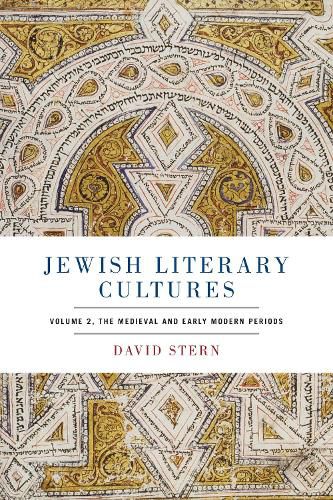Readings Newsletter
Become a Readings Member to make your shopping experience even easier.
Sign in or sign up for free!
You’re not far away from qualifying for FREE standard shipping within Australia
You’ve qualified for FREE standard shipping within Australia
The cart is loading…






In this second of three planned volumes of Jewish Literary Cultures, David Stern explores diverse texts and topics in medieval and early modern Jewish literature and book history.
Stern uses contemporary critical approaches to assess larger themes and currents in medieval and early modern Jewish civilization-opening new windows into cultural exchange, the impact of materiality upon reading practice and literary reception, and the nature of the Jewish imagination and literary creativity. The texts and topics examined in this volume include a remarkable story about a Jew who marries a demoness, a blasphemous rabbinic parody, and the material histories of four classic Jewish books: the Hebrew Bible in the manuscript age; the early printed rabbinic Bible, the Talmud, and the invention of its unusual page format; the medieval Jewish prayerbook and its unexpected illustrations; and the Passover Haggadah and its cartographic messianism.
Accessibly written and thoughtfully compiled, these essays are perfect for use in the classroom and for reference in personal and professional research. Scholars and specialists in medieval and early modern Judaism in particular will appreciate Stern’s work.
$9.00 standard shipping within Australia
FREE standard shipping within Australia for orders over $100.00
Express & International shipping calculated at checkout
In this second of three planned volumes of Jewish Literary Cultures, David Stern explores diverse texts and topics in medieval and early modern Jewish literature and book history.
Stern uses contemporary critical approaches to assess larger themes and currents in medieval and early modern Jewish civilization-opening new windows into cultural exchange, the impact of materiality upon reading practice and literary reception, and the nature of the Jewish imagination and literary creativity. The texts and topics examined in this volume include a remarkable story about a Jew who marries a demoness, a blasphemous rabbinic parody, and the material histories of four classic Jewish books: the Hebrew Bible in the manuscript age; the early printed rabbinic Bible, the Talmud, and the invention of its unusual page format; the medieval Jewish prayerbook and its unexpected illustrations; and the Passover Haggadah and its cartographic messianism.
Accessibly written and thoughtfully compiled, these essays are perfect for use in the classroom and for reference in personal and professional research. Scholars and specialists in medieval and early modern Judaism in particular will appreciate Stern’s work.